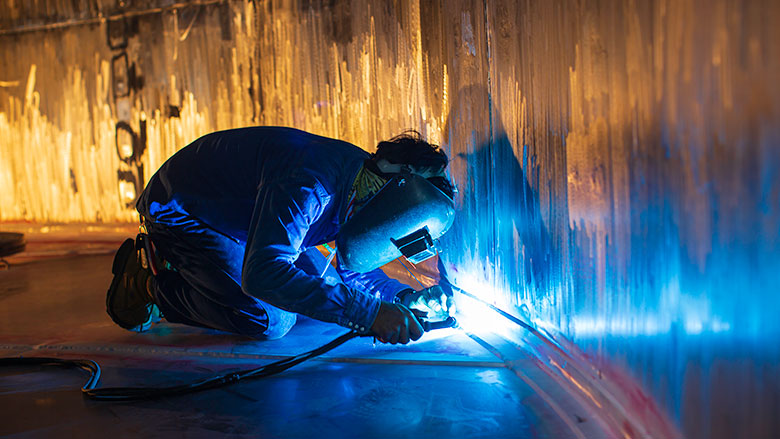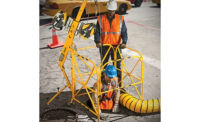Confined spaces can be found in every industry. These can be in the form of a small crawl space underground that may only hold a few people, a massive tank that can hold multiple teams, or anything in between.
But what exactly makes something a confined space?
OSHA defines a confined space as an area that is large enough for individuals to enter and perform work, has limited means of entry and exit, and is not designed for continued occupancy.
To take it step further, OSHA deems a confined space as a “permit required confined space” if it has the potential to contain a hazardous atmosphere, contains material that has the potential to engulf the inhabitants, has walls or floors that taper to a point that could trap or asphyxiate the entrant, or contains any other recognized safety or health hazard.
The first line of defense
A hole watch plays a large part in any confined space entry and work, typically being the first line of defense if something goes wrong. If there is a dangerous situation or something happens to the entrant, it is the duty of the hole watch to recognize this danger or event and initiate the evacuation. The hole watch must also notify the rescue team, who can then enter the space and begin any rescue efforts.
The process of the hole watch noticing the potential danger, confirming the status, and calling the rescue team may take minutes, but in the event of a man down situation or gas hazard, minutes could be the difference between life and death.
Communication is key
The process of a notification getting to the right people can go from minutes to seconds, however, when you pair a connected worker solution with a wireless communications network, such as LENS Wireless from Industrial Scientific.
Let’s look at a scenario without connected equipment:
A team is working in a confined space and has a gas alarm. The hole watch can hear the audible alarm, or see the visual, and calls or radios out to see what is going on. There is no answer.
Is this because the entrants didn’t hear them? Have they gone down due to the gas alarm? Is this a low alarm that is being ignored, or a high alarm that could be life threatening? How long does the hole watch wait before calling the rescue team in that may or may not be needed and shutting down work?
Without knowing exactly what is going on, the hole watch is forced to make decisions and is put in a place where human error can be a factor. Best case scenario they do all the right things immediately without hesitation, but this may not be what happens in any given instance.
Now let’s add a wireless communications network and a connected worker solution:
A team is working in a confined space and has a gas alarm. Within seconds that gas alarm is being shared through a wireless communications network to the hole watch, who is now able to see the exact alarm levels that the workers are being exposed to. That alarm is also being sent back to the control room in real time, where the first responders and rescue team are stationed.
Low alarms in many scenarios are common, which may or may not prompt a deployment of a rescue team. Regardless of their process of what they do, the rescue team knows exactly what is going on, what gas levels are being read, and have GPS coordinates of where the confined space is. The team is now ready to deploy within seconds of the alarm occurring.
As they are responding the situation changes. What was a low alarm has now turned into a man-down alarm due to the instrument being stationary, and the gas levels have risen to a high alarm value. Since the gas values have triggered a high alarm, customizable settings in the system also notify additional personnel at the facility via text, email, or phone call. By the time they get to the confined space to perform the rescue they have been alerted of the initial low alarm, the transition to a high alarm, as well as the man down alarm letting them know the entrant may not be responsive.
With a wireless communications network and a connected worker solution every team is notified of exact gas levels and conditions within seconds, providing a full picture of exactly what they are going into to perform their duties.



